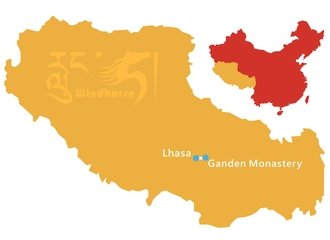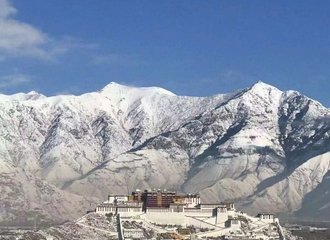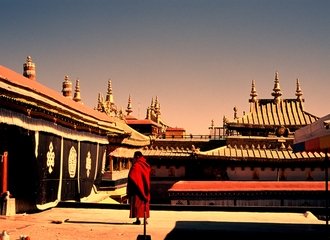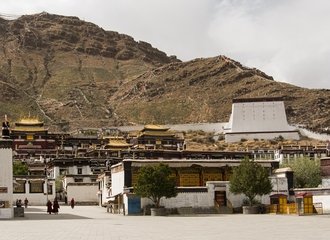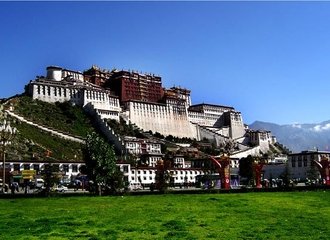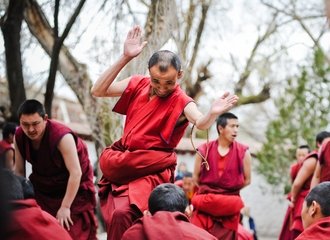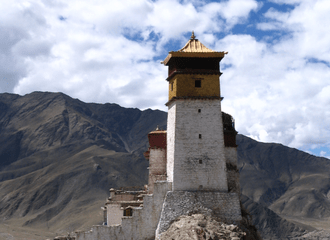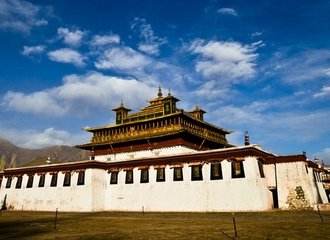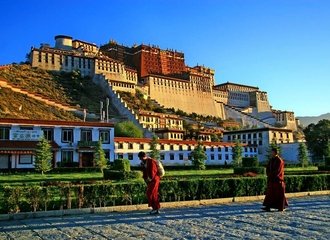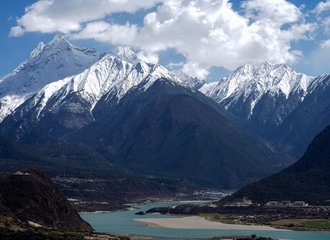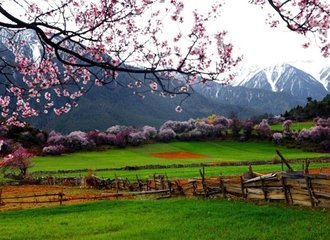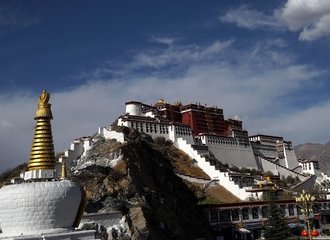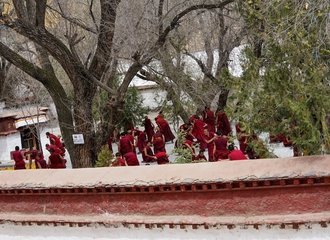How Many Days Should I Spend in Tibet?
Are you planning a trip to Tibet and wondering how many days you should have for your visit? Planning the duration of your trip is crucial to ensure you have enough time to explore the unique landscapes, immerse yourself in the rich Tibetan culture, and experience the spiritual essence of this enchanting region. In this article, we will provide you with valuable insights and tips on the number of days required for your Tibet trip, allowing you to make the most out of your adventure.
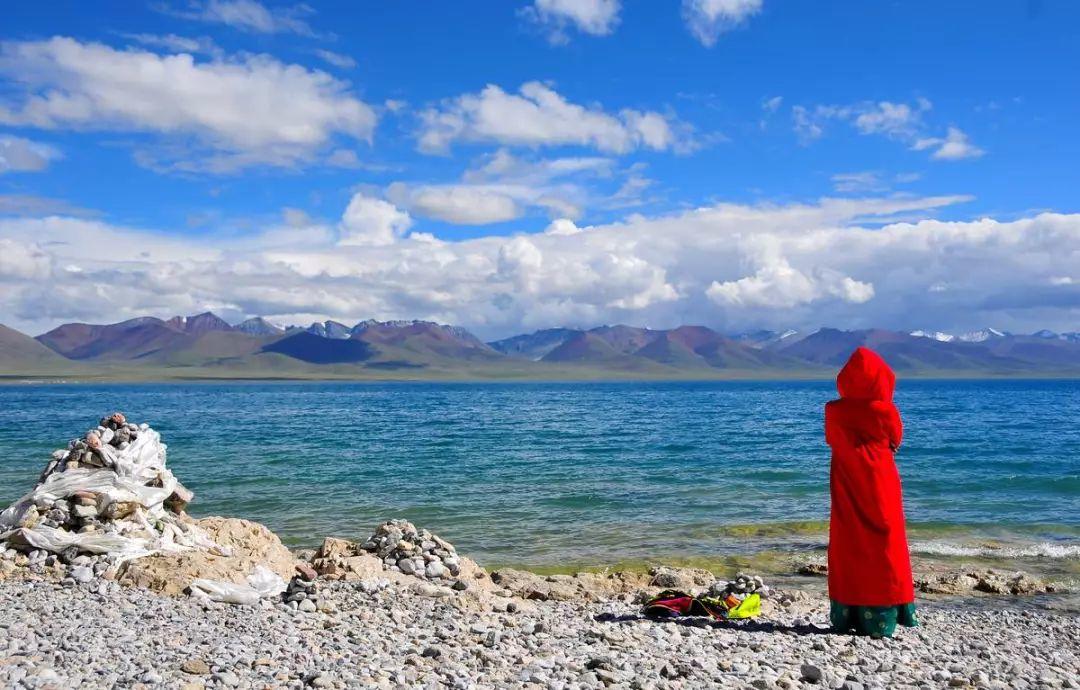
1. Introduction
Tibet, often referred to as the "Roof of the World," is a land of stunning natural beauty, ancient monasteries, and a unique blend of Buddhism and Tibetan culture. Before boarding on your journey, it is essential to plan the duration of your trip based on your interests, available time, and the attractions you wish to explore.
2. Factors helping you decide the trip duration
Several factors can influence the number of days required for your Tibet trip. These include:
- Interests and Activities: Determine the activities and sights you want to experience during your visit, whether it's trekking, photography, cultural immersion, or a combination of these.
- Available Time: Assess the time you have available for your trip, including travel to and from Tibet.
- Altitude Acclimatization: Consider the need for acclimatization to the high altitude of Tibet, as it might require additional days before you can fully engage in activities.
- Budget: Determine your budget and how it aligns with the duration of your trip.
- Season and Weather: Take into account the season you plan to visit, as weather conditions can affect transportation and accessibility to certain areas.
3. How Many Days Do you Need for your Tibet Tour in General?
Based on our 18 years of expertise, a well-rounded Tibet itinerary typically ranges from 8 to 14 days. This duration allows you to delve into the rich cultural heritage, explore stunning landscapes, and create lasting memories.
4. Tibet Short Visits
If you have limited time, you can still experience the beauty of Tibet through short visits. Lhasa, the capital city, offers numerous attractions, including the iconic Potala Palace, Jokhang Temple and some major monasteries. These can be explored in 2-3 days, providing a glimpse into Tibetan history and culture.
5. Recommended Tibet Tour Itineraries Based on Attractions
To make the most of your Tibet trip, we have outlined several recommended itineraries based on different durations. Choose the one that suits your preferences and time availability.
1-2 days: Not recommended. The oxygen content, pressure, and humidity at high altitudes in Tibet are significantly reduced. With the average altitude in Tibet being over 3,600 meters above sea level, it is common for individuals to experience symptoms of high altitude, such as headaches, chest tightness, fatigue, and mild fever. We strongly advise all travelers to allocate at least 1-2 days for acclimatize to the high-altitude. Without this essential time to adjust, your journey has not truly begun.
3-4 days: Lhasa, the heart of Tibetan culture, is a destination that holds great significance for pilgrims and visitors alike. The monasteries and temples in Lhasa are the custodians of Tibetan spirituality and offer a rich cultural experience. As the first stop for many tourists, Lhasa city provides numerous highlights to explore. If you have limited time, focus on must-visit attractions such as the iconic Potala Palace, revered Jokhang Temple, vibrant Barkhor Street, and the historical Drepung Monastery and Sera Monastery.
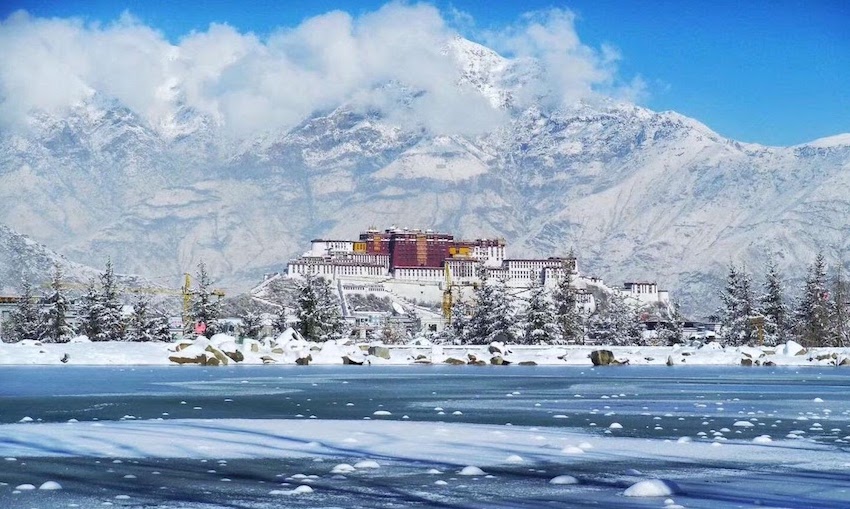
5-6 days: In addition to acclimatizing and exploring Lhasa for 3-4 days, travelers have the option to further enrich their Tibet experience. One choice is a day excursion to the sacred Yamdrok Tso Lake, or a 2-day trip to Namtso Lake combined with a visit to the Yangpachen hot-spring en route. For those intrigued by monasteries and Buddhism, alternatives include a day hike to the hidden Drak Yerpa caves or a visit to Ganden Monastery, Tsurphu Monastery, or Tidrum Nunnery and hot spring. There are various options to delve deeper into the spiritual and natural wonders of Tibet during your 5-6-day itinerary.
Related Tour:
- 5 days Lhasa - Yamdrok Lake tour (local family visit)
- 5 days Splendid Lhasa tour with Ganden Monastery
- 6 days Lhasa spiritual tour (hot-spring, hiking and monasteries)
7-8 days: For many travelers, a 7-8 day itinerary is ideal for their first Tibet tour, encompassing the renowned Everest Base Camp and the scenic sites along the popular Friendship Highway connecting Tibet and Nepal. There are two options to consider: an overland trip from Lhasa to Kathmandu via Everest, or returning to Lhasa after witnessing the majestic Mt. Everest. If you prefer a less adventurous journey, you can focus on exploring Tsedang, the cradle of Tibetan civilization, where the first palace and monastery were established. Alternatively, you can venture to eastern Tibet, renowned for its stunning natural landscapes and lower altitudes, and visit the picturesque Nyingchi region.
Related Tour:

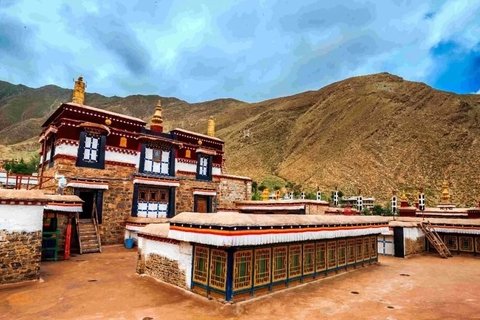
10 days: Congratulations to travelers planning a 10-day stay in Tibet! With this timeframe, you can explore approximately 80% of the top must-see attractions in Tibet. A perfect itinerary may include visiting the central region of Tibet, followed by a journey to the iconic Mount Everest Base Camp in the west and complete the trip with visit to the breathtaking Namtso Lake in the north. Another popular route is starting from Lhasa and exploring the scenic wonders of eastern Tibet Nyingchi and travel further to Rawok tso Lake along the famous Sichuan-Tibetan Highway. If your vacation falls in June or September, you'll be captivated by the magnificent natural beauty that unfolds before you.
Related Tour:
- 10 days Mt. Everest Base Camp with holy Namtso Lake tour
- 10 days Eastern Tibet south route to Rawok - Tso tour
15 days: If you're planning a two-week journey in Tibet, we highly recommend prioritizing a visit to Mount Kailash and Lake Manasarovar. Mount Kailash holds great mystique and is considered the most sacred mountain in the world. It is revered by four religions and is believed to be the center of the universe. The spiritual significance and breathtaking beauty of this region make it a must-see destination.
Another fantastic option for a 15-day itinerary is embarking on an overland tour from Sichuan or Yunnan to Tibet. This route allows you to experience the diverse landscapes and cultures as you travel through the stunning regions of Sichuan or Yunnan and eventually reach Tibet. Along the way, you'll encounter charming towns, picturesque valleys, ancient monasteries, and encounter the unique local customs and traditions.
Related Tour:
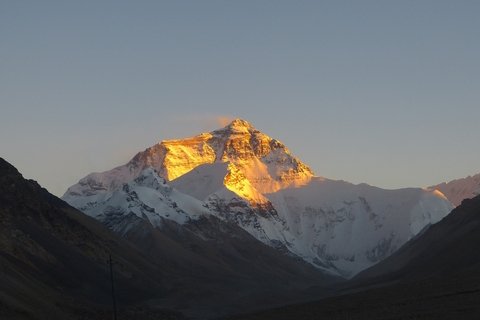
16+ days: If you have more than 15 days to explore Tibet, there are numerous choices to consider. One highly recommended option is venturing into the far western region of Tibet - Nagri area. This includes sacred sites like Mount Kailash and Lake Manasarovar, which hold immense spiritual significance. Additionally, you can explore the captivating Guge Kingdom Ruins, offering a glimpse into Tibet's ancient history, and continue travel to the breathtaking northern Changtang region, known for its untouched natural beauty.
With a 20-day trip, you'll have ample time to visit all the essential spots and top highlights of Tibet. This extended duration allows for a deeper understanding of the region's religious culture, history, and Tibetan folk customs. You can immerse yourself in the vibrant monasteries, explore remote villages, and witness the stunning landscapes that make Tibet truly extraordinary.
Related Tour:
6. Recommended Tibet Itineraries by Interests and Activities
Tibet Trekking and Hiking
Have a trekking or hiking tour in Tibet, known as the "Third Pole of the world," offers a unique and rewarding experience for ambitious hikers and trekkers. It provides an opportunity to witness remote and untouched areas where locals still cherish their traditional lifestyle. Tibet trekking or hiking tours typically range from 5 to 15+ days, including driving days, to fully appreciate the wonders of Tibet's natural landscapes.
Short day hikes near Lhasa include Pabongka and Dark Yerpa, as well as Chimpuk Hermitage near Samye Monastery. For longer treks of 3 to 5 days, you can choose from routes like Tsurphu to Yangpachen, Ganden to Samye, Old Tingri to Rongbuk (offering a view of the north face of Everest), or the famous Mt Kailash Kora. The most extended trek of 7 to 10 days leads to the Gyama (Kharta) Valley, where you can witness the magnificent east face of Everest.
Can't wait to make a Tibet trekking tour ? Please check our How to plan a Trekking in Tibet page for detailed guidelines.

Explore the Natural Scenery
In addition to its rich cultural heritage, Tibet boasts an abundance of natural wonders, including the world's highest mountain, Everest, and the stunning Namtso Lake. Not to be overlooked is the enchanting "Tibetan Switzerland" found in the Nyingchi area of eastern Tibet. To fully immerse yourself in Tibet's natural landscapes, allocate 5-10 days for your journey.
The short-stay-like 5-6 days would only allow travelers to see either Lake Yamdrok Tso and Namtso (two of the three holy lakes), or eastern Tibet Nyingchi. The visiting to Mt Everest and the vast meadows, wastelands, glaciers, and wildlife along the way can be added if travelers plan to have a longer holiday around 9-10 days.
Related Tour:
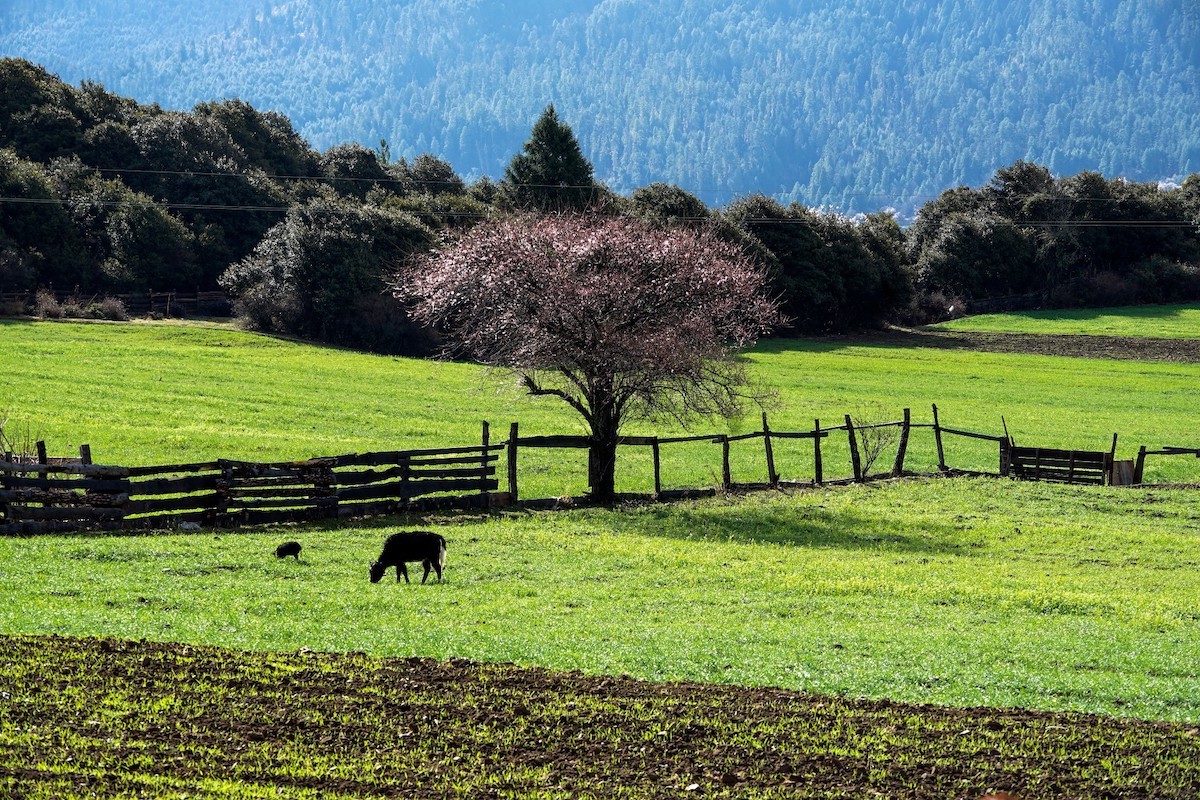
Rich Tibetan Culture: Explore Palaces, Forts, Monasteries and Temples
For travelers with a keen interest in Tibetan Buddhism and culture, immersing oneself in the vibrant heritage of central Tibet is highly recommended. Plan to spend approximately 5-9 days visiting monasteries, palaces, and significant cultural sites.
A shorter stay of 5-6 days allows you to visit the capital city of Lhasa, where you can explore the revered Jokhang Temple and the iconic Potala Palace. Additionally, you can discover the great three monasteries of the Gelug Sect, along with the important towns of Gyantse and Shigatse. These sites offer a profound insight into Tibetan Buddhism and its historical significance.
For a week-long or extended stay, you can further enrich your cultural exploration by including Tsedang, the birthplace of the first palace and monastery in Tibetan history. This addition provides a deeper understanding of the roots of Tibetan civilization and its remarkable cultural heritage.
Related Tour:
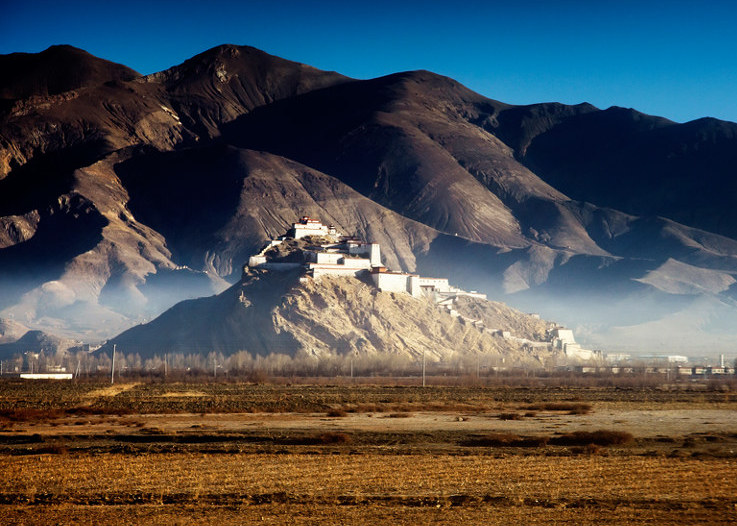
Overland Tibet Trips: Exploring Diverse Landscapes and Cultural Customs
For travelers seeking to immerse themselves in different natural scenery and cultural customs, an overland trip via one of the highways to Tibet is the perfect choice. To fully experience the beauty and depth of this type of travel, it is recommended to plan a vacation lasting 10 to 15+ days. Among the 5 highways to Tibet, the G318 highway from Chengdu is highly recommended. It offers a plethora of breathtaking sights, including countless gorges, meandering rivers, expansive grasslands, majestic glaciers, lush forests, vibrant wildflowers, serene lakes, and charming residential buildings. This route creates a tapestry of diverse and captivating views, providing a remarkable journey through Tibet's rich landscapes.
Related Tour:
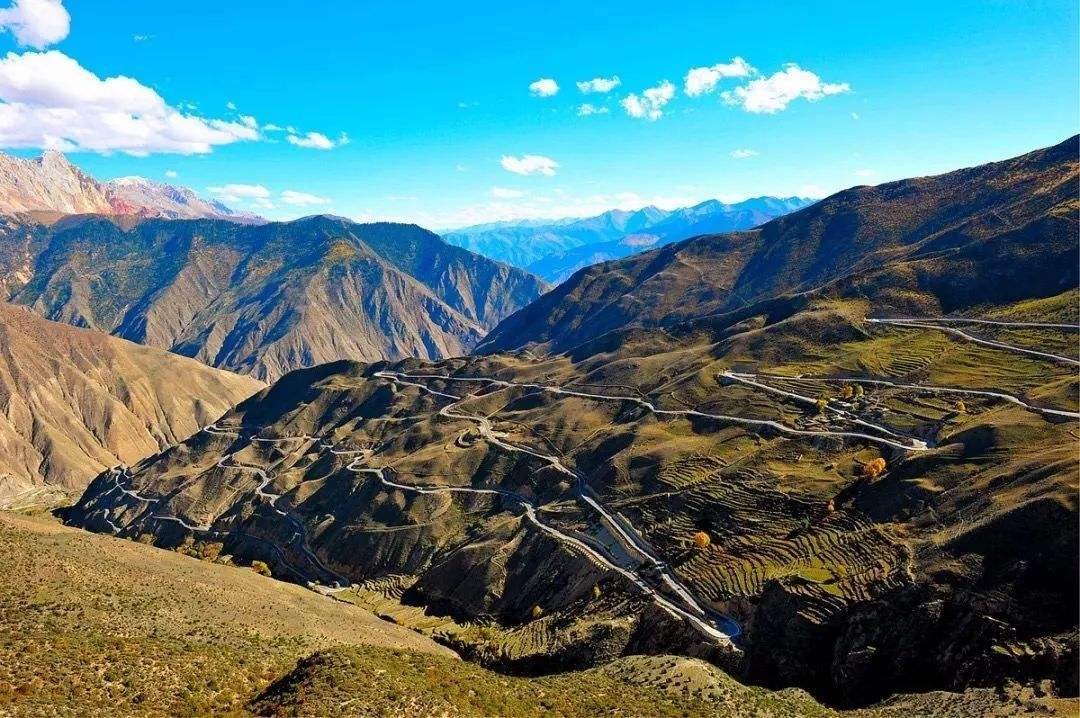
Tibet Train Tour: Marvel at the Scenic Qinghai-Tibet Railway
For travelers who wish to travel to Tibet by train and enjoy the beautiful landscape along with the Qinghai-Tibet railway, it would take about 7-12 days. The best starting train station is in Xining, which covers all the highlights along the train journey, but with the shortest train ride for about 21 hours. Travelers could also combine a Tibet train tour with a visit to other popular cities like Beijing, Xi'an, Chengdu, Chongqing, Lanzhou, etc.
Related Tour:
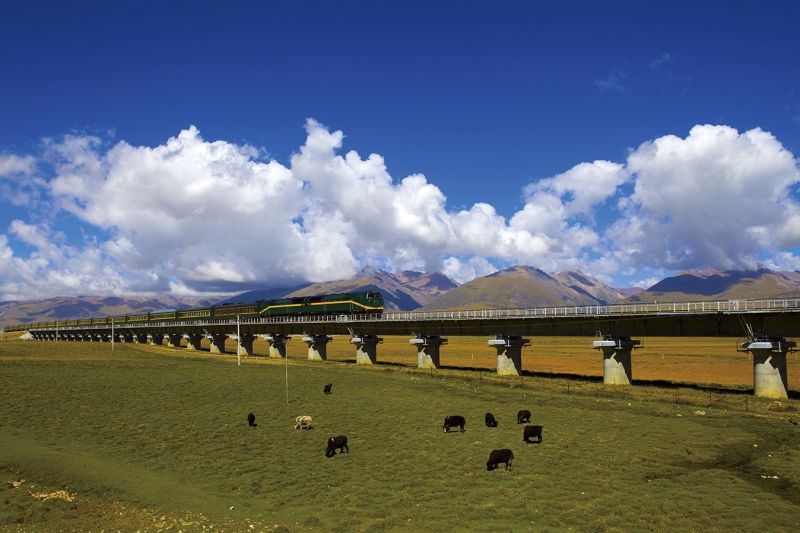
Participate in Tibetan Festivals: Immerse Yourself in Cultural Celebrations
For travelers eager to join the vibrant festivals during their Tibet tour, allocating 5-15 days is recommended to fully experience the cultural richness. The duration allows you to witness and partake in the festivities, creating cherished memories.
- For a 5-6 days journey, you could consider the Shoton Festival, the biggest and most traditional festival in Lhasa; or focus on the festivals in the famous monasteries like Tsurphu Monastery, Ganden Monastery, Samye Monastery, Tashilunpo Monastery, etc.
- If you have a keen interest in horse racing festivals, then you would need at least a week or more to join during the summer time. Gyantse Horse Racing Festival is held usually every June or July, while the Nagqu Horse Racing Festival, starting in early August, provide exhilarating spectacles of horsemanship and local traditions.
- An important and famous festival to consider is the Saga Dawa festival, held in the Mount Kailash area. This festival features the raising of a new Tarboche prayer pole each year in May or June (April 15th in the Tibetan calendar). To partake in this significant event, plan for a minimum of 2 weeks to make this remarkable journey.
Related Tour:

7. Preparation and Travel Tips Before Traveling to Tibet
- Tibet Travel Permits and Regulations: There are some strict rules and regulations for foreign travelers visiting Tibet, unlike the other parts of China. To travel to Tibet, the overseas travelers are required to hold a valid Chinese visa, as well as the special Tibet permit including the Tibet Tourism Bureau Permit (TTB), Alien Travel Permit (ATP/PSB) and Military Permit to visit a different area of Tibet. WindhorseTour will help you to obtain all required Tibet permits by using your passport page and China visa page copies about 20-30 days in advance.
- Acclimatization and Altitude Sickness: With an average altitude of over 4,000 meters, we encourage all travelers to check with the doctors, to confirm their physical condition is okay for the high altitude areas prior to departure for Tibet. It's common for everyone to have some symptoms of high altitude. For more details, please read the high altitude sickness page.
- Tibet is comfortable and cool in summer, but with a big temperature difference between morning and evening. The temperature during the daytime under sunshine is around 25℃, and it drops to 10℃ at night. Tibet is relatively cold in spring, autumn, and winter. Fleece jackets, thick thermal underwear, and thick down jackets are necessary, as well as hats, scarves, and gloves. In some areas with extremely high altitudes, such as Namtso, Mount Everest Base Camp, and the Ngari area, outdoor jackets or down jackets are required even in summer.
- Ultraviolet rays on the plateau are very strong, travelers are highly recommended to use SPF50+ sunscreens to prevent sunburn. In addition, sunglasses, sun hats, headbands, etc. are all necessary sunscreen products. For travelers who plan to do the trekking or hiking, you need to bring professional outdoor equipment to ensure safety.
- Currently, most of Tibet has opened 4G networks. Except for the two regions of Ngari and Nagqu, most areas in Tibet have been able to use mobile phones to smoothly use the Internet.
- At present, all major Chinese banks have established business outlets and ATM machines in Tibet. However, in general, the number of shops in Tibet that can be used for credit cards is rather limited, hence, it's better to get enough cash in advance for consumption in Tibet.
Conclusion
Planning a trip to Tibet requires careful consideration of various factors such as the duration of your stay, acclimatization, travel permits, and the best time to visit. By following the recommendations provided in this article, you can ensure a memorable and enriching experience in the mystical land of Tibet.


